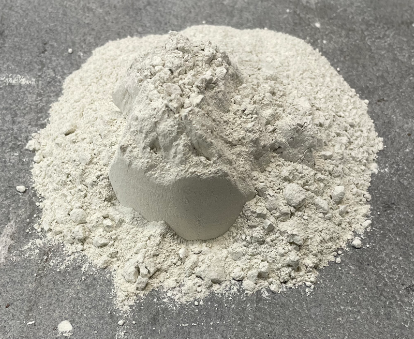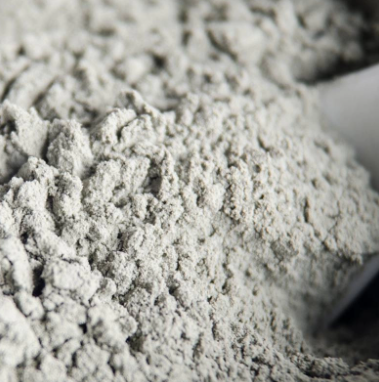- Understanding the Role of Geomembrane Liners in Waste Management
- Innovations in Geomembrane Liners for Water Management
- Geomembrane Liners: A Comprehensive Guide
- The Future of Geomembrane Liners in Civil Engineering
- Geomembrane Liners: Enhancing Landfill Stability
Manager:Alvin Wang
WhatsApp:+62 8983806051
Tel:+86 10-5797-1075
Email:steelwang@okorder.com
Address:3rd Floor, No.2 Building, No.1 Sanlihe Road
Does bentonite clay dissolve in water?
Bentonite clay is a versatile substance, which is popularly used in construction and cosmetics industries among other disciplines. Many people wonder whether it dissolves in water or not. This article aims to delve into the properties of bentonite clay, its interaction with water, and its role in applications such as the bentonite blanket.

Understanding Bentonite Clay
Before delving into its solubility in water, let's first understand what bentonite clay is. Bentonite is actually an absorbent aluminium phyllosilicate mainly consisting of montmorillonite. It originates from weathered volcanic ash and has got distinctive structure that makes it stand out.
Composition and Properties
Bentonite clay consists mostly of montmorillonite, an expandable smectitic type of clay mineral. Montmorillonite is a type of smectitic clays characterized by high cation exchange capacity (CEC) and swelling properties. This makes the clay absorb water hence increasing its volume.
Interaction with Water
Now, let us go to the main question: Does bentonite clay dissolve in water? The answer to this can be both yes and no according to what we mean by ""dissolve."" If you put sugar or salt into water, they will disappear but their particles shall be entirely dispersed resulting into solution. However, when mixed with water, bentonite does not dissolve but rather forms a colloidal suspension.
Colloidal Suspension
Clay particles that make up bentonites are capable of swelling and dispersing throughout a liquid medium creating colloidal suspensions when these come into contact with water . Therefore, these particles are distributed evenly but have not dissolved within such a medium. Such suspensions may appear unclear due to scattering by small solid particles like clays.
Gel Formation
Under certain conditions, the above described colloidal suspension formed as a result of interaction between bentonite clay and water can also develop into gel-like substances. This is because the charged surfaces of the clay particles interact with molecules of water to produce such gels. The gel-like property makes this type of clay an excellent addition in various applications like drilling fluids, foundry molds, and sealants.
Applications of Bentonite Clay
Now that we understand how bentonite clay interacts with water let's explore one of its significant applications: the bentonite blanket.
What is a Bentonite Blanket?
Bentonite blankets are composite liners used in environmental containment systems, also known as geosynthetic clay liners (GCLs) or bentonite mats. They are usually composed of geotextile fabric layers which enclose a core consisting of bentonite clay. The geotextile layers provide reinforcement and protection, while the bentonite clay acts as the impermeable barrier.
Function of Bentonite Blanket
A major function played by a bentonite blanket is to inhibit movement or flow involving liquids and gases across different containment system applications. These may consist of landfill liners, pond liners, and secondary containment systems for hazardous waste. Water contaminants and gases are all kept out due to keeping a swelling type clays that seals it off completely called a barrier.
Installation Process
The installation process usually involves placing GCL rolls in the desired location with overlapping seams so as to have continuous barriers. Then edges should be secured before soil or geomembranes cover up everything else on top. For the containment system to last long enough and be efficient, perfect installation is very important.
Advantages of Bentonite Blankets
There are several advantages that make using a bentonite blanket more preferable than using traditional methods for containing some substance:
1. Very Low Permeability: Bentonite clay can swell and this tightness protects liquid as well as gas leakage hazards.
2. A method of patching up and healing itself: To keep the containment system intact, small punctures or tears can be self-sealed with bentonite clay.
3. Simplicity in mounting: Installing bentonite blankets is relatively easy compared to concrete or synthetic liners, requiring less specialized equipment.
4. Environmentally Friendly: Bentonite clay is naturally occurring material which has minimal effect on the environment hence it can be used in sensitive ecosystems.

Conclusion
In conclusion, even though traditional dissolution in water does not happen, it is apparent that bentonite clay suspends colloids when mixed with water. It is this colloidal suspension together with swelling abilities and sealing properties that make bentonite clay highly valuable for a range of purposes including making bentonite blankets. The growth of environmental concerns will necessitate the presence such containment solutions like bentonite blankets in order to safeguard our ecosystems from harmful waste materials and contaminants management."
-
2024-05-15How long does bentonite waterproofing last?
-
2024-05-15What is bentonite used for?
-
2024-05-15What happens when bentonite gets wet?
-
2024-05-15Does bentonite go bad?






